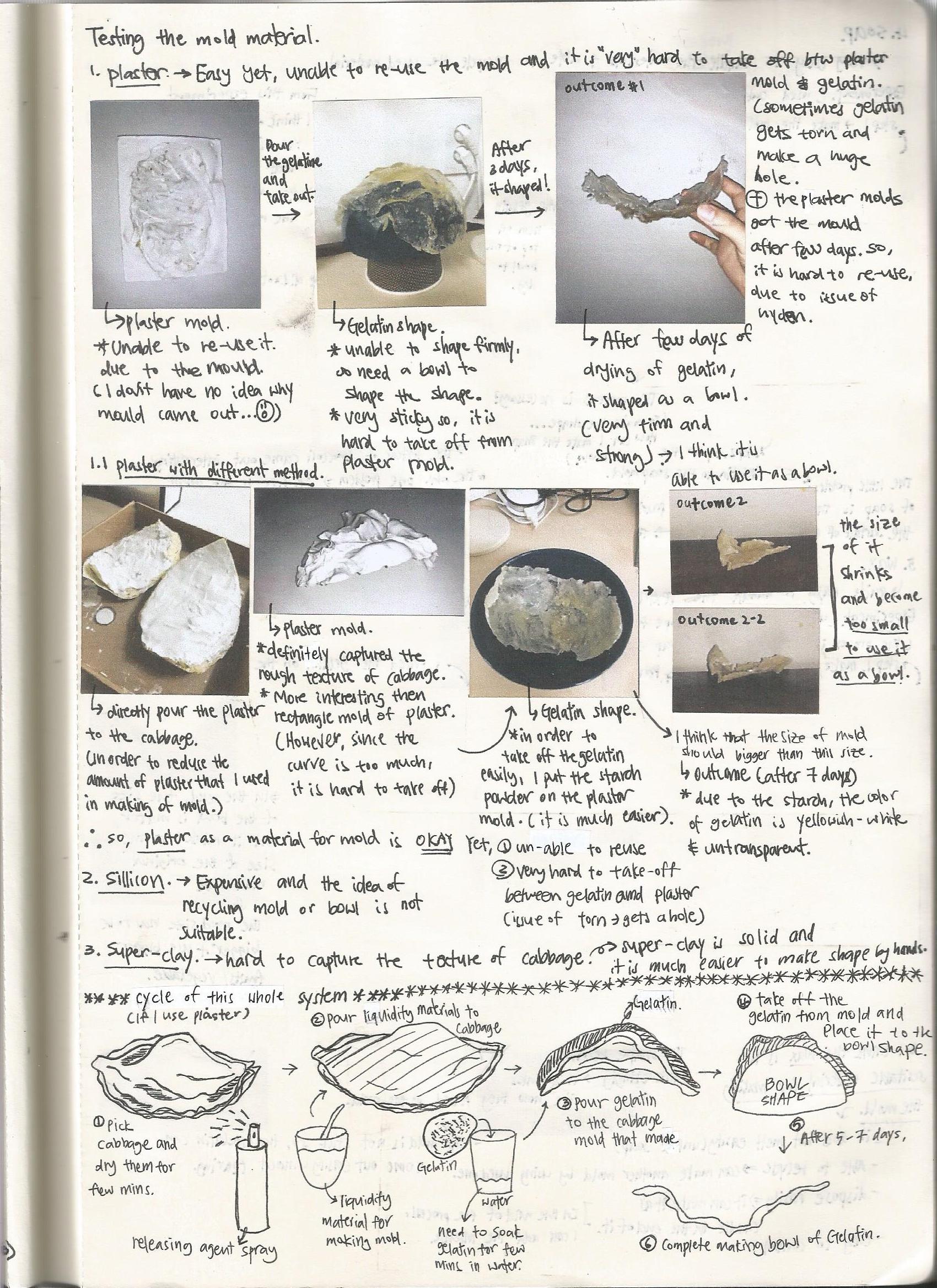gelabowl
2020 @ Personal WorkThe project focuses on a circular cycle, zero-waste of producing cooking utensils using vegetable gelatin material by duplicating the texture of expired vegetables from the big market.
As plastic material has rapidly revolutionised almost every industry, the consequences of using it are coming up. Living in a wasteful society and industry that produces tons of products in the market, as I studied product design in school, I wanted to challenge myself to think of a zero-waste, green cycle of producing products. Therefore, as a starting point, I focus on the plastic bowls and plates that can be seen in every market to think about what the alternative cycle of plastic can be, process-wise and otherwise.
For the first step, I thought about the prime material that can form a bowl shape and duplicate the texture of expired, soon-to-be thrown-away vegetables. I experimented with some materials such as corn starch, vegetable gelatin, sugar powder, plaster, silicon, and wax, yet vegetable gelatin is suitable for making a bowl, and wax is appropriate fornicating the texture of the vegetables. In terms of making the system of production, the wax that has been used in copying the surface and being the mould of the bowl can be re-melt; hence, within the amount of material used to produce, it can be unlimited. Also, as vegetable gelatins are highly eco-friendly and sustainable materials, they can be better than plastic. Therefore, from the beginning of getting thrown away vegetables from the big market to the producing the cooking utensils, it can be a circular economy. Moreover, as the product itself has a unique shape, it may deliver distinctiveness.




